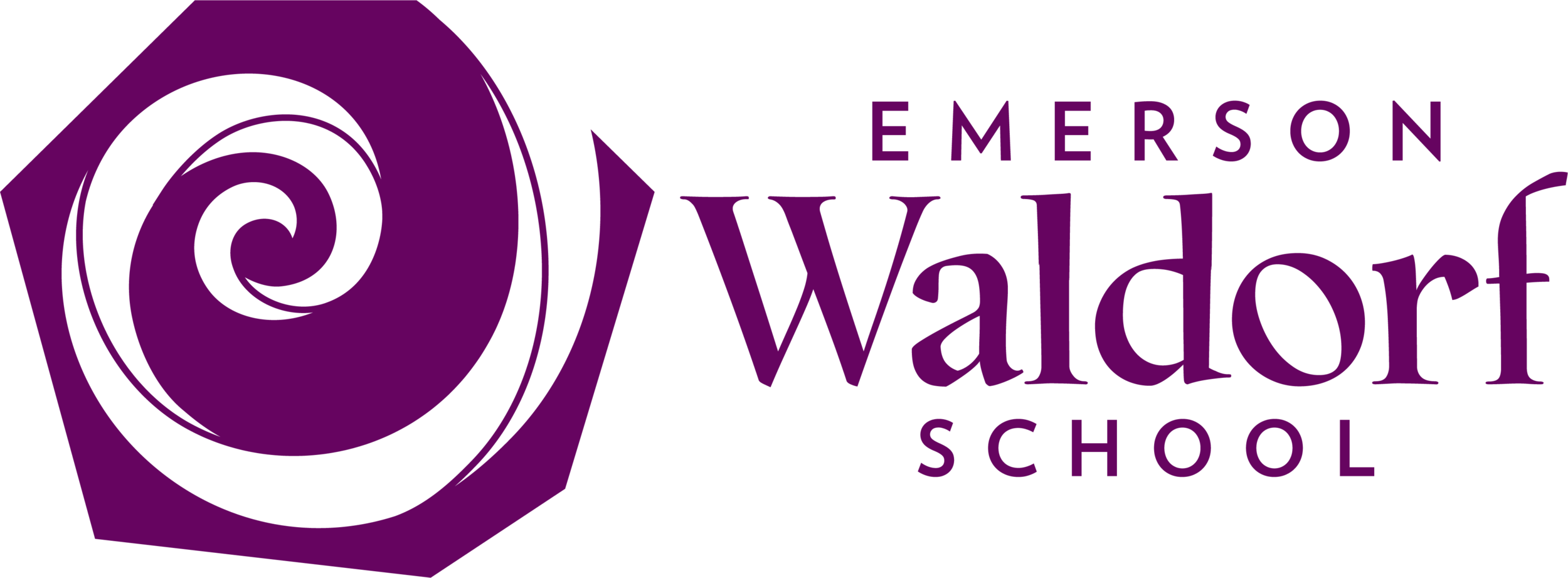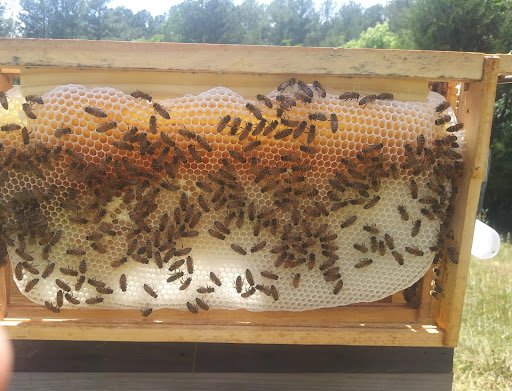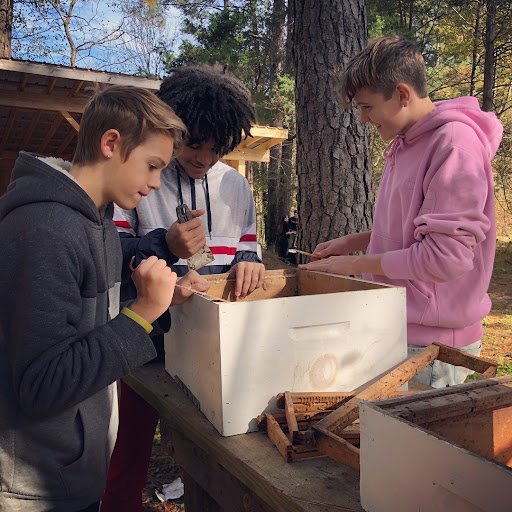Chasing the Dream of the Honeybees
Community begets community. And so it was in February of 2019, Gunther Hauk came as an emissary from the Spikenard Honeybee Sanctuary. Through his story, wit, and information, he inspired the Emerson Waldorf School (EWS) community to set about on an adventure, guided only by trust in each other and in the honeybee
Hauk's workshop was insightful about our essential relationship with the honeybee. Learning that honeybees only make about 20% extra honey, we did not embark on this endeavor for a honey business, but rather to offer a healing place for bees to continue pollinating our gardens and agricultural crops, since toxicity levels have risen for pollinators due to herbicide and pesticide use. School farmer Kristin McGee ordered two "packages" of honeybees to be delivered at the end of March. To prepare, we used what we had available, including hive boxes and equipment from former beekeeping periods at the school. Classes helped clean the old equipment and students moved large stumps uphill to the field for hive stands. Andrea Eichinger-Wiese volunteered to help with the beekeeping and attend the introductory beekeeping classes at Spikenard
At the end of March, 2019 our bees arrived. They included an artificial queen and three pounds of bees, or roughly 10,000 bees, each. We held a honeybee welcoming ceremony at the farm with poems and songs. Students, faculty, and parents watched while Farmer Kristin and Mrs. Andrea "poured" the honeybees into each hive box. It was wonderful to see those honeybees flying with the golden sunshine reflected on their wings as they went into their new home.
That first year, we had a wonderful array of parents, teachers, and community members come to join in the activities of the hives. For an eighth-grade project, a student-designed, painted, and sold honeybee cards, donating the sales back to our school bee fund and Spikenard Honeybee Sanctuary. The third grade created a "Bee Booth" to sell decorated beeswax candles, lemonade, honey sticks, and more for the bee fund, which later inspired "Farm Fridays," a weekly after-school social gathering. The fifth grade came to the apiary during their botany block to view the work of the honeybees as Mrs. Andrea pulled some frames out during the hive visit Students helped Farmer Kristin broadcast crimson clover in the field.
In October 2019, Gunther Hauk was able to visit again to give a workshop for parents and teachers on the biodynamic preparations which support the health of the whole farm and school grounds. One of the themes in supporting the honeybee is how important the environment is to their wellbeing Honeybee workers have a three-mile flight radius from the hive, so Mark Eichinger-Wiese, the school's gardener and blacksmithing teacher, readied 60 willow cuttings for border hedges and ordered 200 mountain mint starts. Students and parents transplanted the mint plants into larger pots and eventually out into the field by the hives to develop a honeybee meadow
Then came the COVID-19 shut down in March 2020.
All community support came to a screeching halt, with only Mrs. Andrea and Farmer Kristin caring for the colonies and the meadow Even in this lonely time, we welcomed two swarms. Although we had never caught a swarm before, after the Spikenard classes, we felt confident about how to proceed One large swarm was at our farm. The other was actually in the front yard of a kindergarten child's grandmother's home.
As we learned slowly how to live with the pandemic, we were able to have work parties with our high school students, offering some outdoor social time mixed with good old work, warming the feeling of isolation. The students planted the willow cuttings, weeded in the meadow, and helped with watering during a very hot time.
Now we are just starting to slowly open up our campus to more parent involvement. We lost three hives last winter. but were given a swarm from another parent beekeeper, and two colonies from Spikenard joined us after school was out. All four of our current hives have natural queens, essential in natural beekeeping practices Their colony names are Forsythia, Salvia, Clover. and Flora. Our willow hedge is growing, two forage arched beds in the meadow are now under cultivation, and a third is in the planning. Our school newsletter is now called the "Honeybee."
"We realized that with vision and community stewardship of the land, paradise can grow day by day as we nourish one another, even in a pandemic."
Did you know that no honeybee can feed itself? They live only by being fed by others. In this time of isolation, we painfully realized how undernourished we are without one another. We also realized that with vision and community stewardship of the land, paradise can grow day by day as we nourish one another, even in a pandemic.
Andrea Eichinger-Wiese, EWS Bee Caretaker and kindergarten teacher, has taught for 30 years in five Waldorf schools. Andrea and her husband Mark are happy to be at the Emerson Waldorf School in Chapel Hill, North Carolina. Their daughter attended Waldorf Schools from K-12 and is currently finishing an engineering degree at UNCA, and understands she has been replaced by honeybees at home.
Kristin McGee is the farm manager and gardening teacher at EWS. She has been with the school since 2013. She served In the Peace Corps as an agricultural volunteer In western Kenya for three years and loves he1· days filled with digging In the dirt with students.





